Rapid urbanization has given India enormous waste management challenges, mainly due to ineffective systems for the collection, transportation, and disposal of solid waste. Inappropriate techniques of managing waste pose huge risks to the environment and public health.
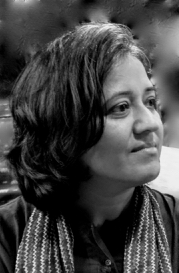
We had an interesting rendezvous with Divya Tiwari, CEO of Saahas NGO.
Saahas has played a pivotal role in creating sustainable waste management practices in India.
The organization was started in 2001 by Ms. Wilma Rodrigues, has made a significant contribution towards ideas of Source Segregation and Decentralised waste management.
Divya joined the organization in 2014 and has since played an instrumental role in the growth of the organization.
Here is an edited version/excerpts of our conversation with Divya. Apart from explaining about work Saahas and Saasha NGO does, she shares interesting insights on waste management, source segregation, recycling, incineration, etc. For the full discussion please watch the video.
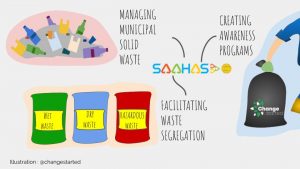
Tell us about Saahas
Saahas was founded as a non for profit organization in 2001 under the society act. In 2013, a private limited entity was established which is called Saahas Zero Waste. I’m heading the non for profit arm while the founder, Wilma is heading the private limited entity.
Tell us about your Journey into Saahas and then to Saahas NGO
I am a supply chain professional with a Ph.D. from IIM Bangalore. I did my Chemical Engineering from REC Trichy and master’s from IIT Roorkee.
I had joined Saahas in Jan 2014, prior to that I was with HP in their supply chain analytics division. While I was always passionate about the environment, the trigger came because my office got relocated quite far away. If you are in Bangalore you will understand that office relocation is actually a life-changing moment!
I got introduced to sustainable waste management by doing some work for my own apartment community where we implemented waste segregation. And when I was looking for a change in the environment sector I applied at a few places and joined the private limited arm of Saahas.
However a few months into the organization, Wilma asked me to head the NGO as she was looking to keep the two organizations independent. Wilma is not involved in our day-to-day activities but is a Founder Member on our Board.
Saahas NGO and Saahas Waste Management Pvt. Ltd.
We operate as two independent entities, with different teams, different offices.
Saahas operate with a business model and revenue generation happens primarily through fees charged for waste management services to different tech parks and apartments, etc.
The NGO, on the other hand, is supported through grants, largely CSR funding. Hence we focus on underprivileged communities, rural programs, public places markets, public parks, etc. We primarily focus on programs that do not have a revenue model.
However, we implement it in a manner that it is handed over to a community or the government body or local administration in the long run and does not remain dependent on CSR funding for perpetuity.
Both organizations do awareness activities and waste collection, processing, etc.
What is the process for the NGO and how do manage the funds?
It’s a multi-stakeholder engagement, starting with obviously the funding partner. We execute all our projects primarily through paid staff hence we cannot take up work if there is no funding partner.
Saahas being an old organization with a large body of work, mostly funding partners find and approach us and ask us to take up some project at a location. I don’t have any fundraising person, it has all been through word of mouth, based on past work, etc. And we have some very old, long-term associations also.
Saahas NGO work
We take up awareness-based projects, one of our largest such projects is called Alag Karo, which ran for about two and a half years in Gurgaon.
For this program the funding partners had approached us, to implement source segregation in apartment communities, in a very systematic manner. We were able to reach out to more than 50 apartment communities and really institutionalized the whole process of Source Segregation.
It was not just about taking awareness sessions, it involved modifying their housekeeping systems, ensuring that the right kind of bins was used when collecting (waste) from the houses.
If you want the system to last, it should not be that one day people get excited and enthusiastic about it. If things are not systematically changed, it quickly falls apart
The moment you go about it very systematically and people see that you’re out there to bring about some long-term change, then the buy-in is far better. That is the time that it takes to win over their trust, once they see that you are serious, committed, then the response is pretty good.
Saahas Team: A motivated team plays a very critical role here because they are the ones who are bringing about this transformation on the ground.
And I would say luckily things have gone well for us, we have a pretty good team now, we’re about 170 people now.
What Kind of waste does Saahas handle
We focus on municipal solid waste – that is generated from homes or offices, small business shops, etc. It does include medical waste to a limited extent.
We don’t handle any industrial waste. Further, while we collect e-waste, we don’t process any e-waste or biomedical waste as that requires specialized licenses.
With respect to e-waste and bio-medical waste, we create awareness around how this needs to be kept separately and how this needs to be handled. Further, we ensure that it goes to the right kind of vendors for processing or disposal.
What happens to our Waste after we dispose
If only we all become sensitive to this aspect as to what happens to waste once we put it in our bins, it will make a huge difference in how we view this whole issue.
Unfortunately, I’ll start with the bad news that while we want to be happy about recycling and the whole idea of the circular economy. But the fact is that there is very little that can be recycled. That’s a fact.
What is recycling
If I’m making an aluminum can out of an aluminum can, that is recycling. Making a glass bottle out of a glass bottle is recycling.
On the other hand, if I’m making a T-shirt out of a pet bottle, it is not really recycling because T-shirt, it cannot be made back into a T-shirt or a PET bottle. It will have to be disposed of and will go to the landfill.
Recycling Challenges
If you look at it, a lot of our products and packaging are not recyclable today because they were just designed with one criterion of consumer convenience. They were not designed to be disposable, reused, and recycled.
A large amount of packaging used for biscuits, chips, etc. is non-recyclable, it is typically called laminate and that is what is largely being used today for many products. Waste pickers can’t make any money out of it by collecting and that’s why you see so much waste lying around. We use these terms called the wealth out of the waste but if that was true you wouldn’t have seen any litter around!
Further apart from the technical aspect of recycling, logistics cost is another big criterion. For example, glass is technically 100% recyclable, however, the logistic cost of glass collection and recycling is huge which acts as a deterrent. The government needs to bring about some kind of extra taxation on virgin materials, the recycled material cost is invariably going to be higher and it will not be competitive enough. And if it’s not competitive enough, it will not be picked up, it’ll not be picked up by people like us, or even by waste pickers.
Service fees can also play a critical role in handling low/no value items. People have to understand that waste management cannot be done on its own. Just as you have various other (fees) you pay for your water, you pay for electricity, waste management is also a utility, if you want this to be managed properly, there’s a cost to it. This is the case with all developed nations too where people pay for waste management services and that is what Indians also need to buy into.
Green, Blue, and Red – remember the 3 colors
As per the Government of India regulations, we all need to segregate our waste into three categories. I’ll tell you an intuitive way to understand these three categories.
The first category is typically called wet waste, this is basically the biodegradable matter which nature can degrade. So anything which nature had made, any food item or something which is coming out from trees, garden, leaves, etc. all of it will be going into the green bin. Remember the tree, green bin. This is basically your first bin, which can be composted, or it can also be sent to biogas facilities. So at least this category can be managed a hundred percent sustainably by you if you can compost it. Because you know, mitti se hi apna khana Banta hai, and if we can take our food waste back to our mitti it is a real circular economy, and 60% of our waste is actually wet waste.
Second, a big category is a commonly dry waste, sukha kachra to be put in a blue color bin. But, the term becomes a bit of a misnomer. If I ask you, dry leaves kahan jaengi (where will it go?), it is not dry waste, dry leaves will go into your wet bin. But the dry term is important because if you start putting dirty plastic or dirty soiled paper in it, then all contents get spoiled. Recycling may happen 2-3 months later as the waste goes through various stages of aggregation. Just imagine, if your dirty milk packet is sitting with you for three months – there will be fungus, it will spoil other paper things around it. So that is what people need to think about when they are putting waste in the dry bin. Make sure you’re not putting waste, which is soiled with food, clean it a little bit. You don’t have to wash with soap etc. just rinse and leave it for drying overnight. You can rinse your milk packet and stick it on the wall, in a day it will be nice and dry and then you can dispose of it. So do these simple things for your dry waste. The dry bin is basically all man-made stuff- paper, metal, glass, textile, shoes, everything will go into your blue bin.
The third category is called domestic hazardous waste is to be put in the Red bin. Remember anything which has your body fluids in it. In these COVID times, it is especially important. So suppose you sneeze in a tissue paper, it goes in the red bin. While if you have wiped your wet hands with tissue, it doesn’t have your body fluid, it only has water so that it can go into your dry bin. The red bin is for Condoms, Diapers, Sanitary Pads, etc. all things that have some form of body fluids. Such things should not go into any of the other two bins as it will contaminate the contents that are to be recycled.
The red bin is often neglected, we’ve been fighting with the government also on this. The whole Swachh Bharat mission just keeps talking about sukha-gila, sukha-gila (Dry, wet). But this third bin is critical to keep the other two bins clean, it is the most important bin.
Also, consider a case where you have something very soiled like you ordered bread, and the bread is totally stuck to that paper. I would rather ask you to put it in the red bin, which is anyway going for incineration or a landfill than spoiling the dry waste bin.
Summary of the 3 Bins
- Green Bin: All food waste, garden waste.
- Blue Bin: Paper, metal, glass, cloth, shoe bag, etc. But it should not be wet, it should not be soiled with food.
- Red Bin: Items that have your body fluids that can contaminate recyclable items in the other two bins. Also, broken glass, sharp objects, nails, etc should not be put into your blue bin because it can hurt the staff, which is sorting the material.
About Waste Collectors – The enablers
Panchayat in a rural area and a Municipality in an urban area are responsible for waste management. But the fact is because we have such a large informal sector, especially in urban areas, there are quite a few waste pickers who have been earning their livelihood from collecting waste. They cannot be ignored or written off when setting up a waste management system.
The government is also pushing for its integration into the waste collection. Whatever informal sector is there, you need to see how they get integrated into your waste collection systems so that their livelihood is not lost.
Not every city will have waste pickers, you see the bulk of the population of waste pickers is around large metros because you have high-rise apartments, tech parks, etc., which are generating huge quantities of high-value waste, which they can collect and sell.
Waste Management – NGO Role?
The onus of waste management is with the municipality, the role that an NGO might play is that of capacity building of the municipality, sensitizing people.
NGO should not be managing waste for any entity. Another role they can play is that of integrating waste pickers, a lot of organizations do that. We largely focus on setting up systems with respect to collection and segregation.
We don’t work too much with the waste picker welfare part. In India, waste pickers have played a very critical role. PET has an 80% recycling rate, one of the highest in the world, courtesy waste pickers.
Incineration
Incineration is a very old system, incinerators had been set up in many developed Western nations such as Japan, Scandinavian countries, etc. When people were running out of landfill space, they realized you can burn it and generate energy out of it. The energy generation part is however dependent on the waste composition that you’re feeding in. In cold nations, the energy is used for the heating requirements where the energy equation works out very well. But when you are trying to convert it into electricity the conversion rate is not that attractive.
Does it really help?
In India unfortunately or fortunately incineration really doesn’t work. It’s a mirage, it doesn’t really generate the energy and you will actually need to pump in energy to burn all your waste. As I had said, 60% of our waste is food waste, which has high moisture content and it will need the energy to be burned.
Incineration is not the best waste management solution. However, we will need it for waste categories that are non-recyclable and where waste management is difficult.
The Pollution aspect of Incineration
When the waste containing chlorine is burnt, it can produce dioxins, which are very harmful, they are almost as harmful as radioactive materials. If you are burning waste in your backyard, you could be generating dioxins, which are very very harmful. They will stay in your system, you will pass it on from generation to generation.
India has to focus on recycling and resource recovery, we can’t really rely on incineration or landfill.
Reduce and Reuse
You might have heard about the Waste pyramid – reduce, reuse, recycle – it’s a beautiful concept.
Reduction of waste generation is critical, so say you’re buying 20 t-shirts, bring it down to 10 t-shirts, if you’re buying five pairs of shoes try and reduce it.
Spend your money more on experience than materialistic goods.
Biodegradable Plastic
We have done some trials at our level and have not seen any of these materials degrade, have kept these materials even for six months and it didn’t turn into anything, forget compost, it didn’t even disintegrate.
That is a huge concern with these materials, but technically we know biodegradable material is possible, where you use corn starch, etc. We have seen experiments where the plastic bag can be dissolved into the water itself. But there are huge challenges with fake products, further, if the land is used for making plastic what would happen to food prices as we have limited cultivable land.
How can an individual contribute towards Waste Management?
Even if you don’t come out to support a Saahas project, it will help if you keep raising these issues in social media and adopting some green practices. That’s what I tell people, for you to individually play a role in energy conservation or water conservation is a little challenging but waste you can make a big difference individually.
You carrying a bag is making a big difference, you getting a water bottle is making a big difference because that many PET bottles are then saved. Also when you walk into a party with a steel water bottle, 10 people will notice it, they will talk about it. One of them will get inspired so you’re doing your bit, we have seen all this makes a big difference.
You can take the next step of implementing source segregation in your communities. Wherever Saahas is there, we will be more than happy to come along and guide you. Our team is small and we can’t be everywhere but a lot of the content that we create is open source. You can download it from our website (www.saahas.org) and use it as you want. We have created some interesting films, which you can check out on our website, YouTube channel.
We wish courage and Saahas to everyone!
Here is the full video of the conversation

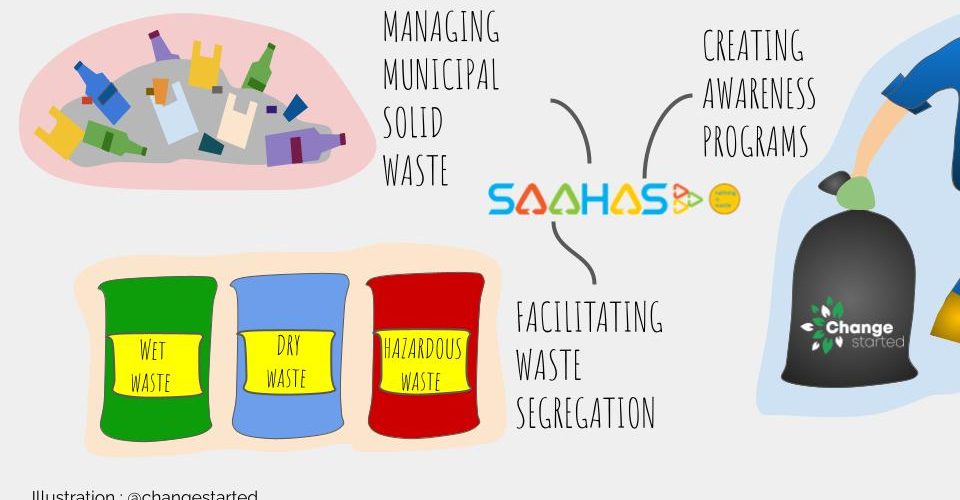

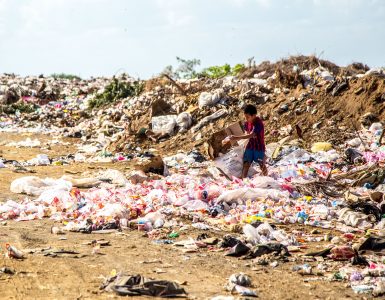
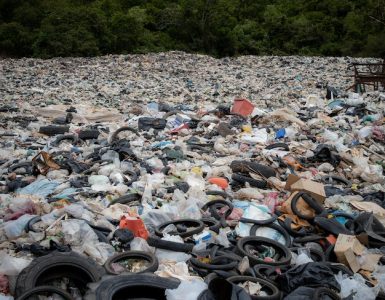

Add comment